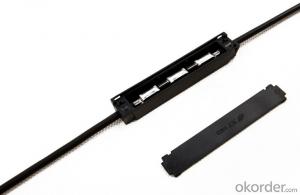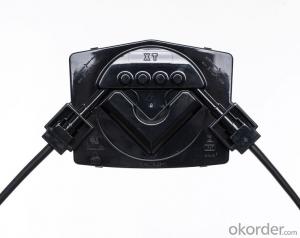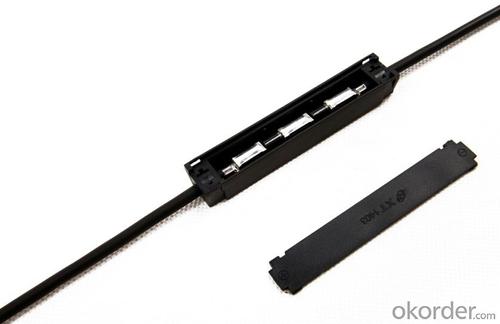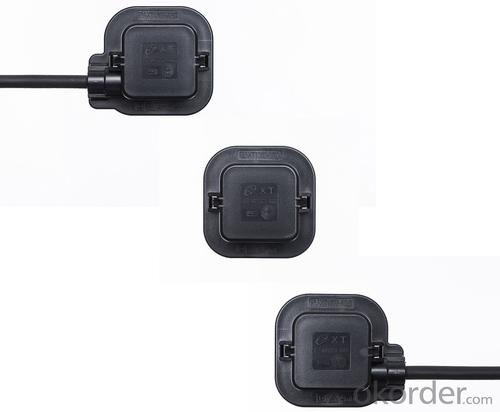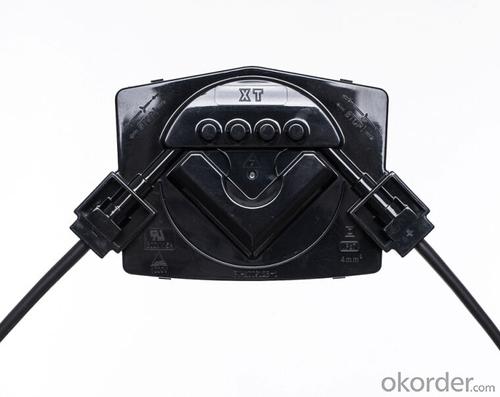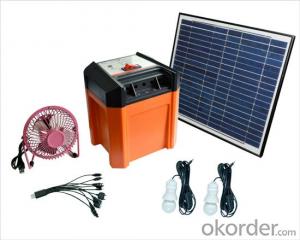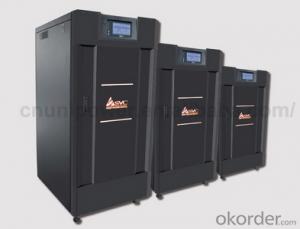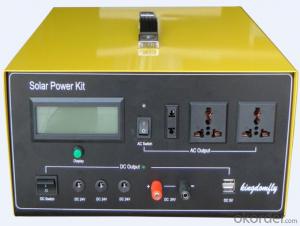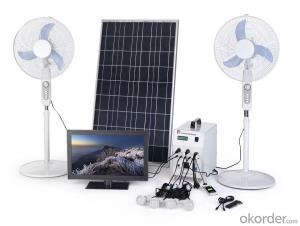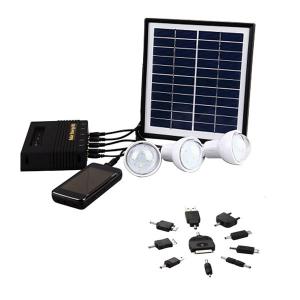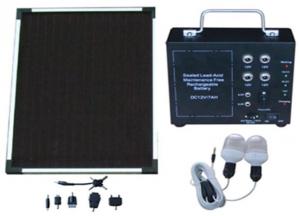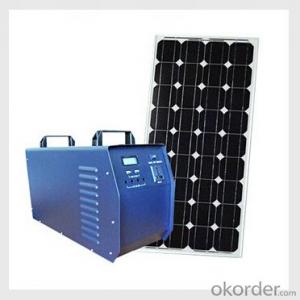Solar Energy Systems Dumfries PV Junction Box XT04 TUV, UL, ISO9001 Certification
- Loading Port:
- Guangzhou
- Payment Terms:
- TT OR LC
- Min Order Qty:
- 3000 pc
- Supply Capability:
- 3000000 pc/month
OKorder Service Pledge
OKorder Financial Service
You Might Also Like
Feature
a. leading Technology
b.long usable
c. securable and reliable Structure
d. simple Operation and easy Installation
e. low contact Resistance
f.good electric Protection
Product description
1. All the connection made by double fixed connection low power loss
2. With the capacity of anti-aging and resistance to ultraviolet radiation on the outer cover with excellent box design with good thermal dissipation
3. Demonstrating safe, realiable and excellent lasting functionality, applicable in harsh outdoors working ambient
4. Big variety for choices,1 rail ,2 rail,3 rail,4 rail,5 rail,6 rail.mini junction box and solar junction box for solar street light

Item | Data |
Terminals for Ribbons | 3/4 |
Rated Current | 7A |
Rated Voltage | 1000V |
Dimension | 119*81.3*21.6mm |
Temperature | -40℃~+85℃ |
Size of Cables | 4 mm2/12AWG |
Size of Ribbons | W(6±2mm)*T(0.3±0.15mm) |
Protection Degree | IP65 |
Flammability Class | V-0 |
FAQ
1. How long will my inquiry get response?
Your inquiry related to our products or prices will be replied within 24 hours.
2. Can I get professional service and suggestion?
Well-trained and experienced staffs to answer all your questions in fluent English.
3. Do you accept OEM or customized design?
OEM & ODM, any your customized lightings we can help you to design and put into product.
4. What if I need specific design?
Distributorship are offered for your unique design and some our current models.
- Q: Can solar energy systems be used in areas with high rainfall?
- Yes, solar energy systems can be used in areas with high rainfall. While excessive cloud cover and rain may reduce the efficiency of solar panels, they can still generate electricity even in such conditions. In fact, some solar panels are designed to work optimally in diffused light, making them suitable for areas with frequent rainfall. Additionally, advancements in solar technology and battery storage systems have made it possible to store excess energy during sunny periods for use during rainy days, ensuring a continuous power supply.
- Q: Can solar energy systems be installed on multi-story buildings?
- Yes, solar energy systems can definitely be installed on multi-story buildings. In fact, multi-story buildings provide ample rooftop space to accommodate a larger number of solar panels, which can generate a significant amount of renewable energy. Additionally, the height of the building may even provide better sun exposure for the solar panels, enhancing their overall efficiency.
- Q: How do solar energy systems affect roofing material warranties?
- Solar energy systems can potentially affect roofing material warranties by requiring penetrations in the roof for installation. These penetrations may void the warranty or require additional measures to maintain the warranty. It is important to consult with the roofing manufacturer and installer to understand the impact and ensure proper installation to avoid any warranty issues.
- Q: How does the angle of solar panels affect their efficiency?
- The angle of solar panels greatly affects their efficiency. By adjusting the angle of the panels to match the latitude of their location, they can maximize their exposure to the sun's rays. Tilting the panels towards the sun helps to capture more sunlight throughout the day, resulting in increased energy production. A proper alignment ensures that the panels receive optimal sunlight, leading to improved efficiency and higher energy generation.
- Q: How do solar energy systems impact water consumption?
- Solar energy systems have a positive impact on water consumption. One of the main advantages of solar energy is that it does not require water to generate electricity, unlike traditional fossil fuel power plants that heavily rely on water for cooling purposes. This is significant because the conventional power generation process consumes vast amounts of water, contributing to water scarcity issues in many regions. Solar energy systems, on the other hand, utilize photovoltaic (PV) panels or concentrated solar power (CSP) technology to convert sunlight into electricity. These systems do not need water for their operation, resulting in a significant reduction in water consumption. This is particularly crucial in areas with limited water resources or drought-prone regions, as solar energy offers a more sustainable and environmentally friendly alternative. In addition to reducing water consumption in the energy sector, solar energy systems can also have indirect positive effects on water conservation. By replacing traditional energy sources with solar power, carbon emissions are significantly reduced, mitigating the impacts of climate change. This, in turn, helps to preserve water resources, as climate change is known to exacerbate droughts and alter precipitation patterns. Furthermore, solar energy systems can be combined with water-efficient technologies to enhance water conservation efforts. For instance, solar-powered water pumps can be utilized for irrigation, reducing the need for fossil fuel-powered pumps that consume significant amounts of water. This combination of solar energy and water-saving technologies can lead to even greater water conservation and more sustainable agricultural practices. In summary, solar energy systems have a positive impact on water consumption by eliminating the need for water in electricity generation and reducing carbon emissions. By promoting the adoption of solar power, we can contribute to water conservation efforts and create a more sustainable future.
- Q: Can a solar energy system be used for charging electric vehicles?
- Yes, a solar energy system can definitely be used for charging electric vehicles. Solar panels, which capture sunlight and convert it into electricity, can be installed on rooftops, carports, or open spaces to generate clean and renewable energy. This energy can then be used to charge electric vehicles, eliminating the need for traditional fossil fuel-based charging methods. Solar-powered charging stations are becoming increasingly popular and are being installed in various locations, such as parking lots, highways, and residential areas, to support the growing demand for electric vehicles. By utilizing solar energy for charging electric vehicles, we can significantly reduce greenhouse gas emissions and dependence on non-renewable energy sources, thus contributing to a more sustainable and environmentally friendly transportation system.
- Q: How does the efficiency of solar panels vary across different manufacturers?
- The efficiency of solar panels can indeed vary across different manufacturers. There are several factors that contribute to this variation. Firstly, the quality and type of materials used in the production of solar panels can greatly impact their efficiency. Manufacturers may use different types of silicon, such as monocrystalline or polycrystalline, which have varying degrees of efficiency. Monocrystalline silicon panels tend to have higher efficiency rates compared to polycrystalline ones. Secondly, the manufacturing processes employed by different companies can affect the efficiency of their solar panels. Some manufacturers may have more advanced and precise techniques, allowing them to produce panels with higher efficiency. This includes factors such as the thickness of the silicon layers, the quality of anti-reflective coatings, and the precision of cell alignment. Thirdly, research and development efforts play a significant role in improving the efficiency of solar panels. Some manufacturers invest heavily in research to develop new technologies and techniques that enhance panel efficiency. This can result in more efficient solar cells and improved overall panel performance. Moreover, product design and engineering also contribute to the efficiency variation among different manufacturers. Some companies may focus on optimizing the panel design for maximum light absorption and reduced energy losses, leading to higher efficiency. This includes factors such as the number and arrangement of cells, the size and spacing of busbars, and the integration of bypass diodes. Additionally, the level of quality control and testing procedures implemented by manufacturers can impact panel efficiency. Companies that have stringent quality control measures and comprehensive testing protocols are more likely to produce panels with higher efficiency rates, as they can identify and minimize any defects or issues during the production process. Lastly, it is worth noting that the efficiency of solar panels is also influenced by external factors such as temperature, shading, and orientation. Different manufacturers may have varying levels of tolerance to these external factors, resulting in different performance levels under real-world conditions. Overall, the efficiency of solar panels can vary across different manufacturers due to factors such as material quality, manufacturing processes, research and development efforts, product design, quality control, and external factors. It is important for consumers to consider these factors when comparing solar panels from different manufacturers to ensure they choose the most efficient option for their specific needs.
- Q: Can solar energy systems be used for large-scale power generation?
- Yes, solar energy systems can be used for large-scale power generation. Solar photovoltaic (PV) power plants, also known as solar farms, are capable of generating a significant amount of electricity. These power plants consist of a large number of solar panels that convert sunlight into electricity. With advancements in technology and economies of scale, the efficiency and cost-effectiveness of solar energy systems have improved, making them viable for large-scale power generation. Additionally, solar energy is a renewable and clean source of power, making it an attractive option for reducing carbon emissions and transitioning to a more sustainable energy future.
- Q: Can solar energy systems be used for powering electric vehicle carpooling services?
- Yes, solar energy systems can be used to power electric vehicle carpooling services. Solar energy systems generate electricity by converting sunlight into usable energy, which can be used to charge electric vehicles. By installing solar panels on the carpooling service's parking lot or charging stations, the vehicles can be charged directly from the sun's energy. This not only reduces the carbon footprint of the carpooling service but also helps in promoting renewable energy usage. Additionally, solar-powered carpooling services can benefit from reduced electricity costs as they would rely less on the grid for charging the vehicles.
- Q: How do I calculate the return on investment for a solar energy system?
- To determine the return on investment (ROI) of a solar energy system, several factors need to be taken into account. Firstly, the initial cost of the system, including the expenses associated with purchasing and installing solar panels, inverters, wiring, and any additional equipment or installation charges, must be calculated. Next, it is crucial to estimate the annual savings or income generated by the system. This can be achieved by assessing the amount of money saved or earned each year by utilizing solar energy instead of relying solely on conventional energy sources. To do this, one can estimate the kilowatt-hour (kWh) production of the system and multiply it by the local electricity rate. Additionally, potential feed-in tariffs or tax credits that may be applicable should be taken into consideration. Afterwards, the payback period needs to be determined. This involves dividing the initial cost by the annual savings or income to ascertain how many years it will take to recoup the investment. For instance, if the initial cost amounts to $20,000 and the annual savings are $2,000, the payback period would be 10 years ($20,000 / $2,000). Finally, the ROI can be calculated. Once the payback period is established, it can be subtracted from the projected lifespan of the solar energy system. The remaining years should then be divided by the payback period and multiplied by 100 to obtain the ROI percentage. For example, if the anticipated lifespan is 25 years and the payback period is 10 years, the ROI would be 60% ((25-10) / 10 * 100). It is important to note that this calculation serves as an estimation and does not take into account factors such as maintenance costs, inflation, or fluctuations in energy prices. Additionally, it is advisable to consider other benefits such as reduced carbon footprint and increased property value when evaluating the ROI of a solar energy system.
Send your message to us
Solar Energy Systems Dumfries PV Junction Box XT04 TUV, UL, ISO9001 Certification
- Loading Port:
- Guangzhou
- Payment Terms:
- TT OR LC
- Min Order Qty:
- 3000 pc
- Supply Capability:
- 3000000 pc/month
OKorder Service Pledge
OKorder Financial Service
Similar products
Hot products
Hot Searches
Related keywords
